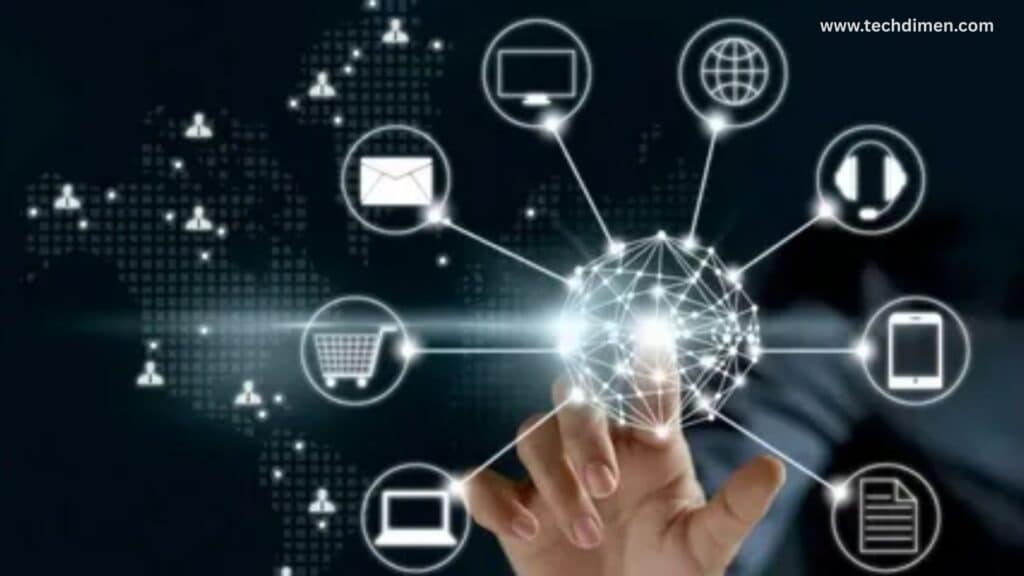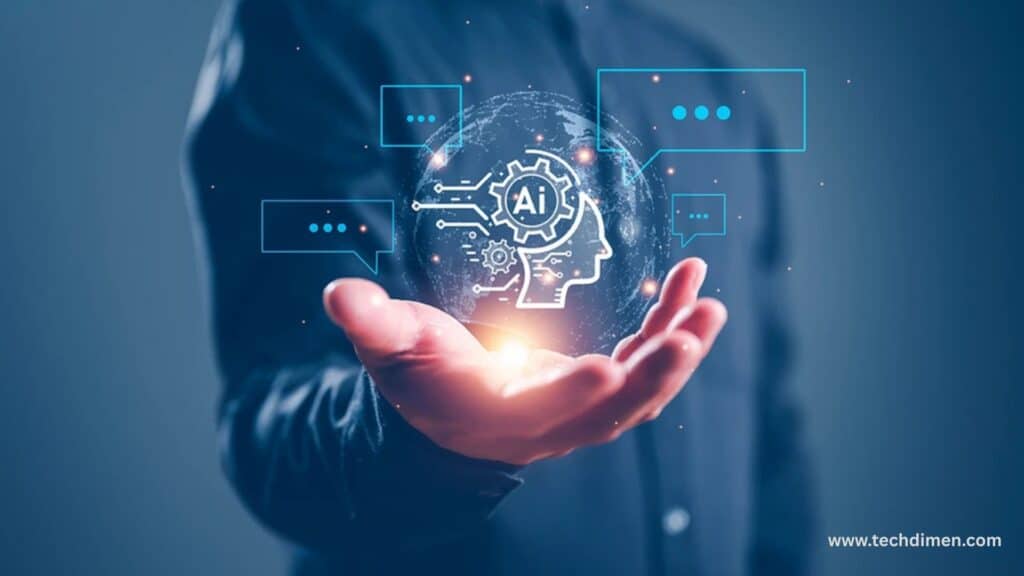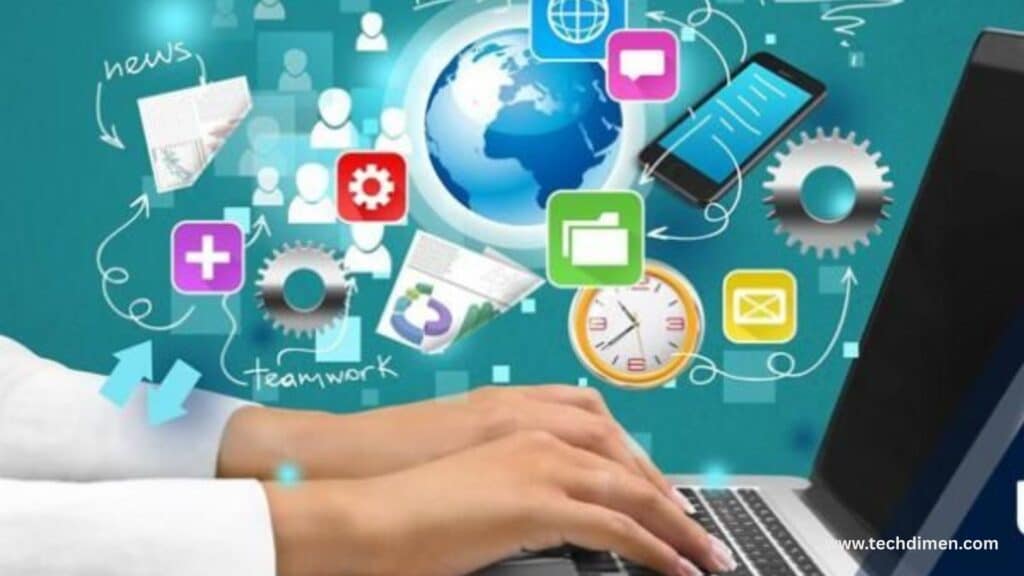Digital information technology is reshaping the way businesses operate, governments function, and people connect around the world. As digital transformation accelerates, understanding the essential technologies, real-world applications, and emerging trends has become critical for anyone aiming to stay relevant in today’s fast-paced, tech-driven landscape.
This guide delves into digital information technology, highlighting the most significant trends of 2025 and the career opportunities emerging alongside them. Whether you’re a tech professional, business leader, or simply curious about the evolving digital world, this article provides clear insights supported by data and practical examples.
Digital Information Technology in the Modern World

Digital information technology, or digital IT, refers to the use of digital systems, devices, and networks to create, store, process, and exchange information. It covers a broad spectrum from traditional computers and software to cloud platforms and advanced data analytics. Unlike traditional IT systems, which relied heavily on physical infrastructure and manual workflows, digital IT thrives on connectivity, automation, and real-time data access.
The scope of digital IT has expanded significantly to include cloud computing, artificial intelligence applications, the Internet of Things (IoT), and sophisticated cybersecurity frameworks. This evolution empowers businesses to optimize their operations, enhance customer experiences, and even create entirely new services that were previously unimaginable.
The backbone of digital IT rests on three key pillars: data, devices, and connectivity. Data acts as the raw digital asset driving analytics, machine learning, and decision-making processes. In 2025, global data generation is expected to reach a staggering 175 zettabytes, fueled by IoT sensors, social media, and enterprise systems. Devices include everything from smartphones and laptops to edge devices and wearable technology, continuously collecting and interacting with data. Connectivity, powered by high-speed networks like 5G and fiber-optic broadband, ensures fast and reliable communication, enabling real-time processing and seamless cloud access.
When comparing digital IT with traditional information systems, the key differences lie in flexibility and speed. Traditional systems depend on fixed hardware and batch processing, whereas digital IT embraces cloud-based infrastructures that scale on demand, automation that reduces human error, and agile frameworks that enable rapid deployment. This shift supports digital transformation initiatives that are essential for maintaining competitiveness in today’s market.
Core Technologies Powering Digital Transformation
Cloud computing remains the cornerstone of digital IT, offering scalable resources through platforms such as Amazon Web Services, Microsoft Azure, and Google Cloud. The advantages of cloud computing include cost efficiency, thanks to pay-as-you-go models that reduce upfront capital expenses, and accessibility, allowing users to access data and applications from anywhere at any time. Multi-cloud environments are also becoming increasingly popular, helping organizations avoid vendor lock-in and optimize performance. In 2025, cloud spending is forecast to exceed $850 billion worldwide, underscoring its critical role in the digital ecosystem.
Artificial intelligence and machine learning have moved beyond the realm of future possibilities and become integral to daily business operations. They automate routine tasks through AI automation and robotic process automation, enhance data analytics for better business insights, and improve cybersecurity by detecting anomalies more effectively. According to Deloitte, organizations that leverage AI in IT report an impressive 40% increase in operational efficiency.
The Internet of Things connects billions of smart devices that continuously collect and transmit data to provide real-time insights. Applications are diverse, ranging from remote patient monitoring in healthcare to smart factory automation in manufacturing and connected retail environments that optimize supply chains. The rapid growth of IoT devices also demands robust IT infrastructure and edge computing capabilities to process data closer to its source, minimizing latency.
With the rise in digitalization, cybersecurity and digital risk management have become more urgent than ever. Leading trends in 2025 emphasize zero trust security models that verify every device and user, AI-driven threat detection and response, and a heightened focus on data privacy regulations like GDPR and CCPA. Global investments in cybersecurity are expected to surpass $200 billion by 2025, reflecting the critical nature of protecting digital assets.
Real-World Applications of Digital Information Technology

In education, digital IT has revolutionized how learning happens. AI-powered adaptive learning platforms personalize education to fit individual student needs, while virtual classrooms leverage immersive virtual reality to create engaging learning environments. Platforms like Coursera and Khan Academy enable remote learning accessible from mobile devices, making education more inclusive and flexible than ever before.
Healthcare has also undergone a digital transformation, accelerated by the pandemic. Telemedicine platforms now connect doctors and patients remotely, expanding access to care. Digital twins simulate personalized treatment plans, and AI enhances diagnostic accuracy and speed. These advancements improve patient outcomes while simultaneously reducing healthcare costs.
In the business world, digital IT facilitates automated workflows using robotic process automation and AI, supports resilient e-commerce platforms driven by cloud computing and big data, and enables remote collaboration through SaaS tools such as Slack and Microsoft Teams. Amazon’s cloud-first strategy and AI-driven logistics stand as a powerful example of how digital IT can transform operations and set new industry standards.
Governments worldwide are digitizing public services to improve transparency, increase citizen engagement, and boost operational efficiency. Estonia’s pioneering e-residency program demonstrates how digital governance initiatives can foster inclusivity and bridge the digital divide.
Emerging Trends in Digital Information Technology (2025 and Beyond)
Edge computing is gaining momentum by moving data processing closer to where it’s generated, which reduces latency and bandwidth consumption. This is especially important for applications such as autonomous vehicles that require instant decision-making, industrial IoT systems focused on predictive maintenance, and real-time analytics in retail and finance.
Blockchain technology is enhancing security and transparency by enabling smart contracts within supply chains, securing digital identity management, and supporting decentralized finance innovations. Financial institutions are adopting blockchain to prevent fraud and ensure secure transactions.
Augmented reality and virtual reality continue to revolutionize sectors like education, retail, and enterprise collaboration. Immersive learning experiences, virtual product demonstrations, and remote training sessions are becoming commonplace. The AR/VR market is projected to grow substantially, reaching $340 billion by 2028.
The rollout of 5G networks provides ultra-fast speeds and low latency, accelerating the expansion of IoT devices, real-time streaming, gaming, and enhanced mobile broadband experiences. This connectivity is critical to supporting the mobile-first architectures that future digital services will rely on.
Skills and Career Opportunities in Digital Information Technology

Digital IT offers a broad array of in-demand roles, from data analysts skilled in machine learning and big data to cloud architects managing complex multi-cloud environments. Cybersecurity specialists are essential to implement zero trust models, while AI engineers focus on developing transparent and explainable AI systems.
Certifications such as AWS Certified Solutions Architect, Certified Information Systems Security Professional (CISSP), Google Professional Data Engineer, and Certified Ethical Hacker (CEH) significantly boost employability. Additionally, higher education programs are increasingly incorporating emerging topics like digital twin technology and AI ethics.
The rise of remote work has opened up freelancing opportunities in software development for SaaS platforms, cybersecurity consulting, data analytics, and digital strategy. Digital nomads benefit from flexible schedules and the global demand for these skills.
Challenges in the Digital Information Era
As digital data collection grows, so do concerns about privacy and ethics. Risks include unauthorized access to sensitive data, ethical dilemmas related to AI decision-making, and the complexities of regulatory compliance. Many companies are adopting digital ethics frameworks to navigate these challenges responsibly.
The digital divide remains a significant issue. While many communities enjoy reliable internet and access to modern devices, others still face connectivity challenges, lack affordable technology, and need improved digital literacy. Addressing this divide requires focused, inclusive technology initiatives.
Constant connectivity can lead to digital fatigue and burnout. Organizations are responding by implementing digital wellbeing policies, promoting ambient computing to reduce distractions, and encouraging employees to maintain healthy work-life boundaries.
Future Outlook: What’s Next for Digital Information Technology?

Predictive technologies and automation will continue to evolve, allowing IT teams to manage systems proactively and streamline workflows. Rather than replacing humans, AI will augment tasks, fostering creativity and productivity in the workplace.
Sustainability is becoming a priority in digital IT with the rise of carbon-neutral data centers, energy-efficient infrastructure, and green IT initiatives. These efforts aim to reduce the technology sector’s carbon footprint and contribute to combating climat
FAQs
1. What is digital information technology in 2025?
Digital information technology in 2025 refers to the advanced systems and tools used to process, store, manage, and transmit data across various digital platforms. It encompasses everything from cloud computing, AI, and big data analytics to IoT, blockchain, and cybersecurity systems.
2. What are the top digital technology trends in 2025?
The leading digital technology trends in 2025 include:
- Generative AI integration in business workflows
- Hyperautomation across industries
- Sustainable data centers and green computing
- Blockchain for secure digital identity and finance
- 5G and edge computing
- AR/VR in education and remote collaboration
- Quantum computing developments
- Zero Trust cybersecurity frameworks
3. How is AI transforming digital technology in 2025?
Artificial intelligence is central to digital transformation in 2025. AI now powers real-time decision-making, predictive analytics, customer service chatbots, autonomous systems, and personalized content across platforms. Tools like OpenAI, Google Gemini, and Microsoft Copilot are reshaping productivity and automation.
4. Which digital tools are most commonly used in 2025?
The most widely used digital tools in 2025 include:
- Microsoft 365 Copilot and Google Workspace AI tools
- Zoom with AI transcription and summarization
- GitHub Copilot for coding automation
- Notion AI for content and project management
- Salesforce Einstein GPT for CRM
- Asana and Trello with integrated automation
- AWS and Azure for cloud infrastructure
5. How has cloud computing evolved in 2025?
Cloud computing in 2025 has shifted to a hybrid and multi-cloud architecture with AI-driven optimization. Serverless platforms, sustainable cloud solutions, and tighter data governance are now standard. Businesses prioritize cloud-native development for agility and scalability.
6. What is the role of cybersecurity in 2025’s digital landscape?
Cybersecurity in 2025 focuses on proactive threat intelligence, zero trust security, and AI-driven monitoring. With more connected devices and remote operations, data breaches and ransomware attacks are addressed through real-time detection, encryption, and decentralized identity systems.
7. How does digital information technology affect jobs and careers in 2025?
Digital IT reshapes job roles through automation, AI tools, and upskilling. While some routine jobs are automated, demand is rising for:
- Data analysts
- Cybersecurity experts
- AI engineers
- Cloud architects
- Digital transformation strategists
Skill adaptability and tech fluency are critical.
8. What industries are most impacted by digital technology in 2025?
The top industries undergoing digital transformation in 2025 include:
- Healthcare (AI diagnostics, wearable tech, telehealth)
- Finance (fintech, blockchain, robo-advisors)
- Retail (smart logistics, predictive personalization)
- Education (AI tutors, immersive learning)
- Manufacturing (IoT, predictive maintenance, automation)
9. What are the ethical concerns around digital technology in 2025?
Key ethical issues in 2025 include:
- AI bias and algorithmic discrimination
- Data privacy and surveillance concerns
- Job displacement due to automation
- Deepfakes and misinformation
- Intellectual property and AI-generated content
These concerns are pushing for stronger digital ethics frameworks and regulations.
10. How does digital transformation help businesses in 2025?
Digital transformation helps businesses by:
- Improving operational efficiency
- Enhancing customer experiences
- Enabling real-time data insights
- Reducing costs with automation
- Scaling globally with cloud infrastructure
Companies that fail to adapt risk falling behind.
Conclusion: The Digital Shift of 2025 and What It Means for You
Digital information technology in 2025 isn’t just about faster systems or smarter tools it’s about how those advances shape everything around us. From artificial intelligence that anticipates your needs to cloud platforms that connect teams across the globe, we’re living through a massive transformation.
What stands out this year is how deeply integrated tech has become in our daily lives and decision-making. It’s not just changing how companies operaten it’s reshaping education, healthcare, finance, and even how we think about privacy and security.
The tools are impressive, sure. But it’s the impact that matters most. Automation is reducing routine tasks, freeing up time for creativity. Real-time data helps leaders make smarter choices. And digital collaboration has torn down the walls between departments, industries, and continents.
Still, this tech-driven world brings responsibilities. With more power comes a greater need for ethical standards, data protection, and human-centered design. The future belongs to those who balance innovation with integrity and who stay flexible as the digital landscape shifts.
In short? The future of digital information technology is here. It’s fast, it’s intelligent, and it’s constantly changing. If you’re ready to adapt, stay informed, and think beyond the tools, 2025 could be your most transformative year yet.

Jhon AJS is a tech enthusiast and author at Tech Dimen, where he explores the latest trends in technology and TV dimensions. With a passion for simplifying complex topics, Jhon aims to make tech accessible and engaging for readers of all levels.







